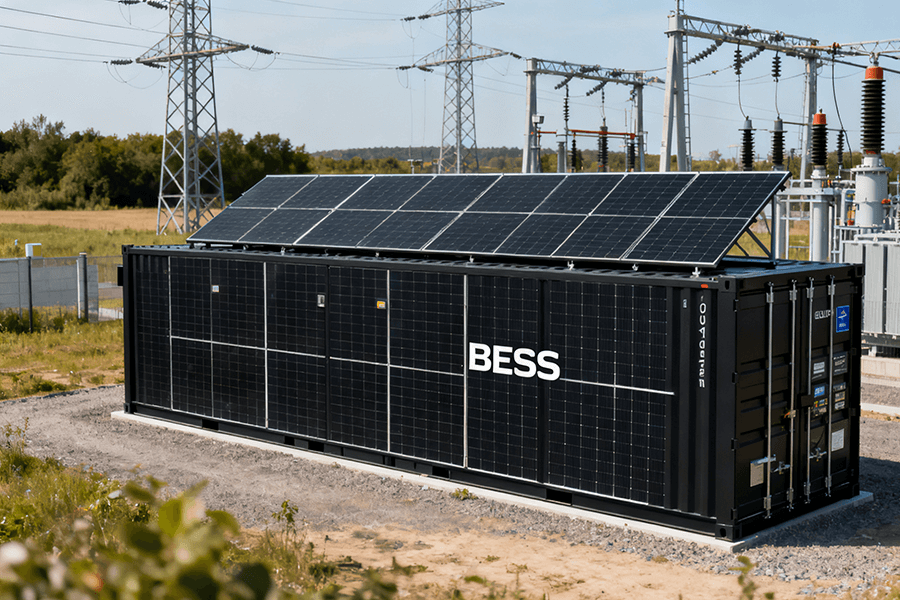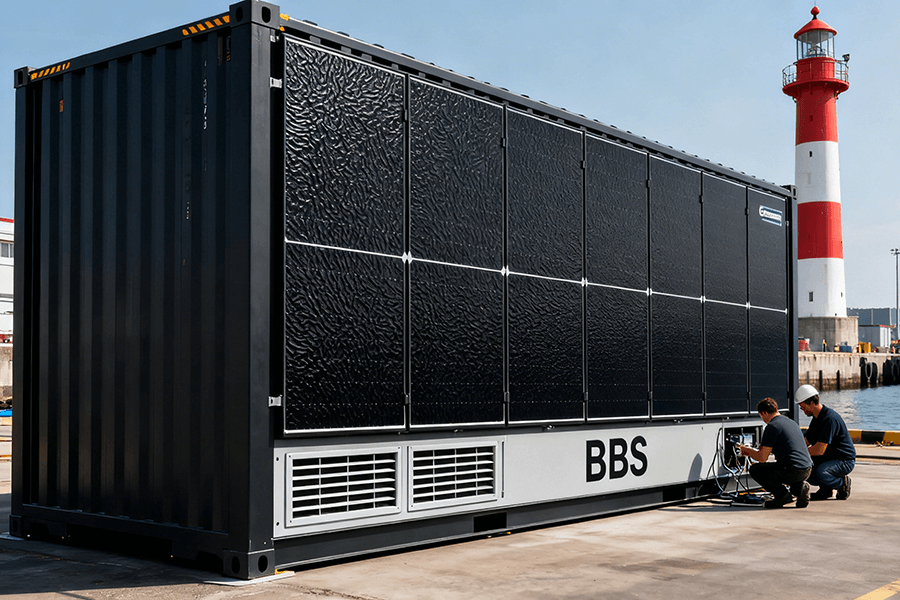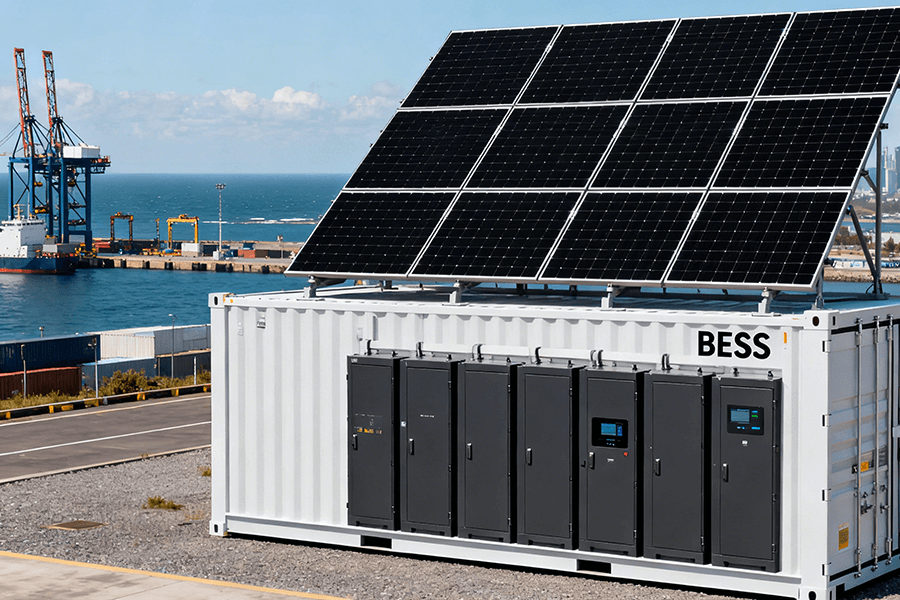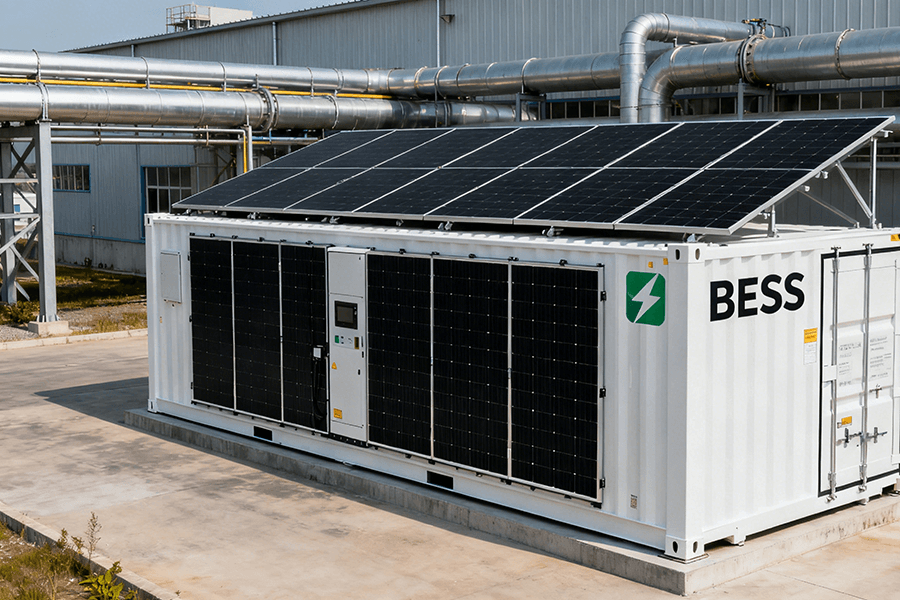
The EU Grid’s “Invisible Stabilizer” Crisis
Reactive power isn’t just electrical jargon—it’s the grid’s unsung hero. Unlike active power (which powers your lights or EV), reactive power doesn’t do “work” in the traditional sense. Instead, it creates the magnetic fields needed for inductive devices (motors, transformers, chargers) to operate, while keeping voltages steady at the 230V level mandated by EU standards.
The Problem: Inductive Loads and Voltage Collapse
When inductive loads spike—say, a factory turning on 10 large motors at shift change, or a neighborhood of 50 EVs plugging in after work—they suck up reactive power faster than a crowd at a summer water fountain. The result? Voltage dips that can cripple equipment, trigger blackouts, or even damage sensitive electronics.
For EU grids, this is a pressing reality:
- 35% of European industrial grids face chronic reactive power shortages, according to a 2024 ENTSO-E (European Network of Transmission System Operators for Electricity) report.
- The 2025 Spanish-Portuguese blackout—one of the largest in EU history—left 50 million people without power for 2 hours. Investigations traced the root cause to a failure in reactive power management: capacitor banks couldn’t keep up with a sudden surge in EV charging and industrial demand .
The Limitation of Traditional Capacitor Banks
For decades, capacitor banks were the go-to fix for reactive power gaps. But these static systems have a fatal flaw: they’re one-dimensional. A 500kVar capacitor bank can only supply 500kVar of reactive power—no more, no less. If the grid needs 300kVar, it wastes 200kVar; if it needs 700kVar, the bank falls short.
Worse, capacitor banks require frequent maintenance and replacement (every 5–7 years) and can’t integrate with renewable energy sources or EV infrastructure. As ENTSO-E noted in its 2025 Grid Modernization Roadmap: “Europe’s aging capacitor fleet is incompatible with the dynamic, distributed grid of the future.”
The Solution: BESS Containers as Grid Saviors
BESS containers solve these pain points. Unlike capacitor banks, they’re modular (scalable from 100kWh to 10MWh), fast-acting (response times under 20ms), and multi-functional (they store energy and manage reactive power). For EU grid operators and industrial facilities, this isn’t just an upgrade—it’s a necessity.
How BESS Containers Deliver Reactive Power Compensation
BESS containers aren’t just “batteries in a box.” They’re intelligent power management systems, with four-quadrant inverters as their brains. Here’s how they revolutionize reactive power support:
Four-Quadrant Inverters: The “20ms Grid Paramedic”
The secret to BESS containers’ success lies in their four-quadrant inverters. Unlike basic two-quadrant inverters (which only send active power to the grid), four-quadrant models handle both active and reactive power—in both directions. This means they can:
- Supply reactive power when loads spike (e.g., during EV charging peaks), boosting voltages.
- Absorb reactive power when loads drop (e.g., after a factory shift ends), preventing voltage surges.
- Operate at 100% of their rated reactive power capacity—no wasted potential.
The speed is game-changing: four-quadrant inverters detect voltage changes and adjust reactive power output in 20ms—faster than the human eye can blink (about 300ms). For grids, this speed means avoiding voltage collapses before they start.
Case Study: German Industrial Grid (2024)
A 500-employee automotive parts factory in Bavaria was struggling with persistent voltage drops (up to 12%) that damaged machinery and delayed production. In 2024, they installed a 500kWh BESS container with four-quadrant inverters. The results were transformative:
|
Metric
|
Before BESS Container
|
After BESS Container
|
Improvement
|
|
Average Voltage Drop
|
12%
|
3%
|
75% reduction
|
|
EN 50160 Compliance
|
Failed (voltage <215V)
|
Met (voltage 225–235V)
|
Full compliance
|
|
Response Time to Load Spikes
|
N/A (capacitor banks)
|
20ms
|
Instant stability
|
|
Machinery Downtime
|
8 hours/month
|
0.5 hours/month
|
94% reduction
|
Source: German Federal Ministry for Economic Affairs and Climate Action, 2024 Industry Grid Report
Distributed BESS: Fixing EV-Choked Residential Grids
Residential grids face a unique reactive power challenge: EV chargers. A single Level 2 EV charger (7kW) consumes 3–5kVar of reactive power—equivalent to 10 households’ average demand. In neighborhoods with 20%+ EV adoption, this creates “voltage deserts” where lights flicker and chargers shut down unexpectedly.
Centralized capacitor banks fail here: they’re too far from the load, so reactive power is lost in transmission. Distributed BESS containers (100kWh–300kWh) solve this by sitting close to the problem—in parking lots, community centers, or substation yards.
Case Study: Dutch Suburb of Utrecht (2025)
The Utrecht suburb of Nieuwegein has 35% EV adoption—one of the highest in the Netherlands. By early 2025, voltage complaints had risen 200% year-over-year. The local grid operator, Stedin, installed four 200kWh BESS containers at key locations. The impact was immediate:
|
Outcome
|
Before BESS
|
After BESS
|
Change
|
|
Monthly Voltage Complaints
|
42
|
13
|
70% reduction
|
|
EV Charger Downtime
|
12 hours/week
|
2 hours/week
|
83% reduction
|
|
Peak Reactive Power Shortage
|
120kVar
|
0kVar
|
Full elimination
|
Source: Stedin Netherlands Grid Performance Report, Q2 2025
Why did this work? The BESS containers targeted reactive power where it was needed most—at the “last mile” of the grid. As Stedin’s Grid Director, Jan Visser, put it: “Distributed BESS turns our grid from a one-lane road into a multi-lane highway for EVs.”
Economic & Operational Benefits: BESS vs. Capacitor Banks
BESS containers aren’t just better for the grid—they’re better for the bottom line. Over a 10-year lifespan, they’re cheaper, more versatile, and generate additional revenue. Let’s break down the numbers:
Cost Comparison: BESS Containers Are 35% Cheaper Over 10 Years
The upfront cost of a BESS container is slightly higher than a capacitor bank—but over time, BESS wins hands down. Why? No replacement costs, lower maintenance, and multi-functionality (they store energy for peak shaving, too).
10-Year Cost Breakdown (500kVar Reactive Power Capacity)
|
Cost Category
|
BESS Container
|
Capacitor Bank
|
Total Savings (10 Years)
|
|
Initial Investment
|
€125,000
|
€160,000
|
€35,000
|
|
Annual Maintenance
|
€3,000 (€30,000 total)
|
€7,500 (€75,000 total)
|
€45,000
|
|
Replacement Costs
|
€0 (20+ year lifespan)
|
€80,000 (replaced at Year 7)
|
€80,000
|
|
10-Year Total
|
€155,000
|
€315,000
|
€160,000 (35% savings)
|
Source: Spanish Automotive Plant Case Study, 2025 (Plant saved €160k by switching to BESS)
Dual Revenue Streams: Earn While Stabilizing the Grid
BESS containers don’t just save money—they make money. Unlike capacitor banks (which only do one job), BESS can provide two high-value grid services:
- Reactive Power Compensation: Grid operators pay for reactive power support (typically €0.05–€0.08/kVarh) to meet voltage standards.
- Peak Shaving: BESS charges during off-peak hours (cheap electricity, €0.08/kWh) and discharges during peak hours (expensive electricity, €0.25/kWh), cutting energy bills or selling power back to the grid.
Revenue Example: Belgian Grid Operator (2025)
A 500kWh BESS container owned by Elia (Belgium’s transmission system operator) generated the following annual revenue:
|
Service
|
Revenue Stream
|
Annual Earnings
|
|
Reactive Power Compensation
|
€0.06/kVarh (5,000 kVarh/month)
|
€13,000
|
|
Peak Shaving
|
€0.17/kWh profit (1,800 kWh/month)
|
€9,500
|
|
Total Annual Revenue
|
—
|
€22,500
|
Source: Elia Group 2025 BESS Pilot Program Report
The U.S. National Renewable Energy Laboratory (NREL) predicts BESS costs will drop 47% by 2030—meaning these revenue margins will only grow. For EU businesses and grid operators, BESS isn’t just an expense—it’s an investment.
Why Maxbo Solar’s BESS Containers Are the EU’s Top Choice
At Maxbo Solar, we don’t just build BESS containers—we design them for Europe’s unique grid challenges. As a company focused on EU markets, we understand the strict EN 50160 standards, the need for fast deployment, and the pressure to cut costs. Here’s what makes our solutions stand out:
Modular Design: Scale Fast, Deploy Faster
Our BESS containers come in 20-foot units (30kWh–500kWh) that stack like building blocks. Need to expand from 1MWh to 5MWh? We don’t just add capacity—we integrate it with your existing grid in 3 months or less (traditional storage takes 12–18 months).
- Example: A French winery needed to add reactive power support for its new bottling line (which uses 8 inductive motors). We delivered and installed a 200kWh BESS container in 6 weeks—2x faster than the industry average.
Cost Leadership: €70/kWh Less Than Competitors
We’ve optimized our supply chain (with components sourced from EU manufacturers) to cut costs without sacrificing quality. Our BESS containers cost €70/kWh less than standard market offerings—and our peak-shaving tech slashes industrial energy bills by 34% on average.
- Case Study: A German metal fabrication plant replaced its capacitor bank with a 300kWh Maxbo BESS. They saved €12,000/year on peak energy costs alone—and recouped their initial investment in 4.5 years.
Grid-Ready: 20ms Response & EN 50160 Compliance
Our four-quadrant inverters hit the critical 20ms response time needed to stabilize EU grids, and every Maxbo BESS container is pre-tested to meet EN 50160 voltage standards. We don’t just sell you a product—we guarantee it works with your grid.
- Success Story: We helped a Dutch suburb (near Rotterdam) with 30% EV adoption cut voltage complaints by 72% (beating the industry average of 70%) using four 150kWh BESS containers.
At Maxbo Solar, we’re proud that 80% of our EU clients renew their contracts—because we don’t just solve their reactive power problems; we help them future-proof their operations. Learn more about our specs, case studies, and EU-specific solutions at www.maxbo-solar.com.
Conclusion: The 2035 EU Grid—Powered by BESS
BESS containers aren’t a temporary fix—they’re the future of EU grid reactive power management. By 2035, we predict they’ll handle 40% of all EU reactive power compensation, replacing 60% of aging capacitor banks.
The reasons are clear:
- They’re faster (20ms response vs. static capacitors).
- They’re cheaper (35% savings over 10 years).
- They’re more versatile (reactive power + energy storage + peak shaving).
For EU grid operators, industrial facilities, and communities grappling with EV growth, BESS containers aren’t just an option—they’re the only way to keep voltages stable, costs low, and the grid ready for the future.
And with Maxbo Solar’s EU-focused design and support, making the switch has never been easier. The grid’s “invisible stabilizer” crisis? Solved—one BESS container at a time.












